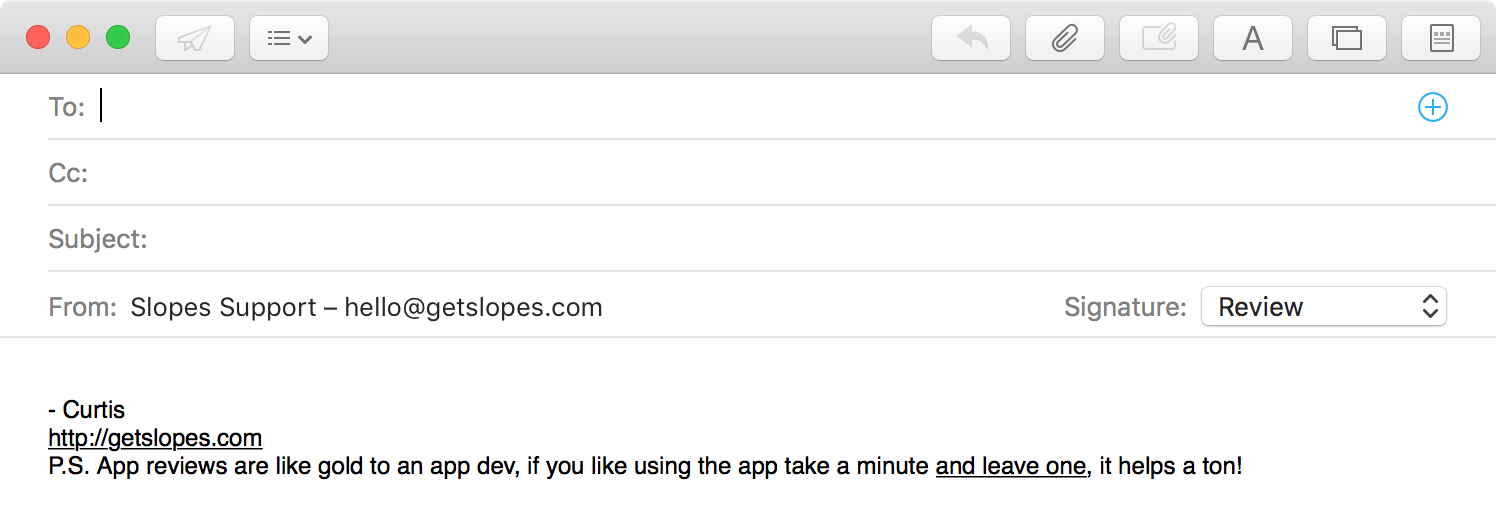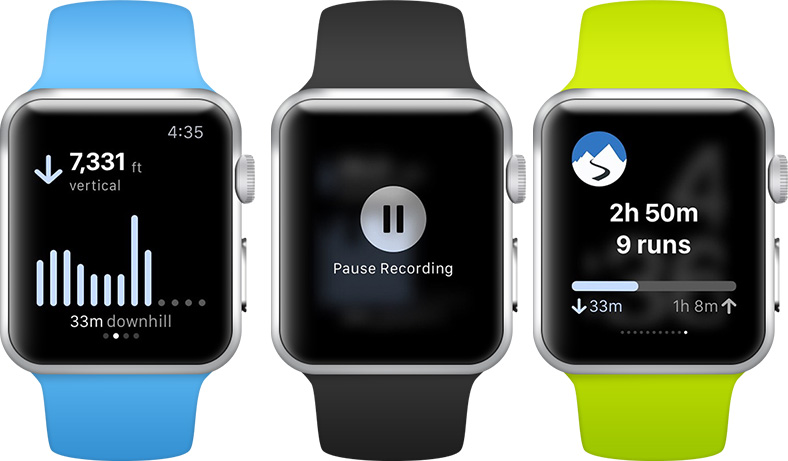Slopes Diaries #2: Retrospective
Slopes Diaries is my ongoing journey to turn my indie app into a more sustainable part of my business. First time reading? Catch up on the journey so far.
What is Slopes? Think Nike+, Runkeeper, Strava, MapMyRun, etc for skiers and snowboarders.
I'm throwing my business model out the window for 2.0, but not because 1.x wasn't working. Slopes 1.x was on track to have it's best season yet; I just don't think it was a model that was sustainable long-term. [1]
Before talking about what changes I'm making to my business model, I think it's worth setting some context. Lets take a look at how my choices over the last two years have helped build an app that's been worth my ongoing efforts.
Starting with a premium price
When I first working on Slopes back in early 2013, I ran a survey through the popular skiing and snowboarding communities on Reddit to get to know part my market better. One of the questions I asked was given a hypothetical app like the one I wanted to build, what would you be willing to pay? My presented options ranged from free to $20. When looking at the results I noticed a drop-off going from $0.99 -> $1.99 as expected, but I was happy to see there was still a healthy-looking market up until the $4.99 -> $5.99 jump. Turned out 40% of my market said they were willing to pay up to $4.99 for the app.
Now remember this was 2013, when the conventional wisdom was you had to be a $0.99 cent app and hope to make it up in volume. I kinda laugh to think of $4.99 as premium, but in 2013 it sure felt like it.
I launched Slopes 1.0 at $4.99 in Sept 2013.
I'm very happy I made sure to not to buy into the $0.99-hype; it has paid off in the last two years, leaving me with a healthier product. $4.99 put Slopes in a position to be ignored by the typical mass-market consumer that wasn't placing any value on my app, and that was a good thing. No, really: limiting my user-base and focusing on the long game, as opposed to the day-one spike, was a healthy business decision especially in retrospect.
I purposely limited my user base to people who were willing to place at least some monetary value on my work. This meant that users were invested in seeing this app work and were less likely to leave in a huff if they hit a bug. More likely than not, my users would reach out to me when they ran into issues instead of one-starring me.
(You do have to make it easy to get in touch with you -- I added a "Send Feedback" button to my about screen that was very easy to find. I took advantage of users emailing me and always prompted for a review, and it got me ~20% of my reviews, all positive.)

Staying small also let me work through the growing pains associated with solving a non-trivial problem. GPS is hard: I'm reading research papers on how to deal with GPS drift, bad/lost signals, satellite hopping, etc. $0.99 users would have one-stared the hell out of Slopes as I learned about all the edge cases I'd have to deal with. Having a small user base, with users who were invested in seeing the app improve, let me survive my v1.x days with a 5-star review and a build-up of customer good-will.
Lesson learned: By focusing on growing a healthy user base that values my app, instead of just a quick grab for money, Slopes is in a great position going into 2.0.
Raising my price
Back in 2013 before I launched I was at a Startup Weekend and got to speak with Loren Brichter. One piece of advice that always stuck with me was that him saying I was crazy only charging $4.99 and should charge more, perhaps $9.99 or more. "Double it!" I remember him saying.
He was on to something, but it took me over a year to get the guts to experiment. I was worried customers would notice me raising or lowering the price and get upset. I was worried I'd raise the price and then lose traction.
Spoilers: no one really noticed.
Early-winter 2015 I started to raise my price. I tried a number of price-points, and over a month of experimenting $7.99 seems to be my sweet-spot for paid-up-front. I lost one or two downloads a day, but my daily revenue went up by a non-trivial amount, to levels that I could actually justify things like ad-buys with.
Humorously I had a potential user reach out to me and say that they would have been willing to pay $3.99 for the app, but $7.99 was too much. I was talking to another developer at CocoaLove this weekend and they had many similar experiences: users seem to always think your app should be 1/2 the price, and then they'd pay.
Goes to show that you should never trust users to tell you what they'd pay for a product. You've got to experiment and see what actually works.
Lesson learned: Charge more. Then double it.
Riding the Apple hype, when it makes sense

Slopes is one of the apps that actually makes sense to have on an Apple Watch. Quick interactions are what Apple Watch was built for, and a lot of the use-cases while recording with Slopes are just that: quick, heads-up-display kinda interactions. You're bundled up, phone deep in your pockets under two layers of cold gear, but you want to pause or check your stats. It's so much easier to check a watch than it is to get our your phone.
So yes, of course I was on Apple Watch day one, and I made sure to talk about my intentions for Apple Watch early and publicly. I don't think Apple ever featured Slopes, but I got a lot of publicity from sites looking to cover Apple Watch apps. I chalk a lot of this press coverage up to the fact that Slopes fit with the Watch and fitness narrative.
As someone without a lot of press connections, this was a huge help to my marketing efforts.
On the opposite end of the spectrum we now have the AppleTV. I have no plans for Slopes + AppleTV. While it could be cool to replay runs on the TV, it doesn't fit a realistic narrative.
Lesson learned: Chase platform enhancements that let you shine. Then brag about your plans.